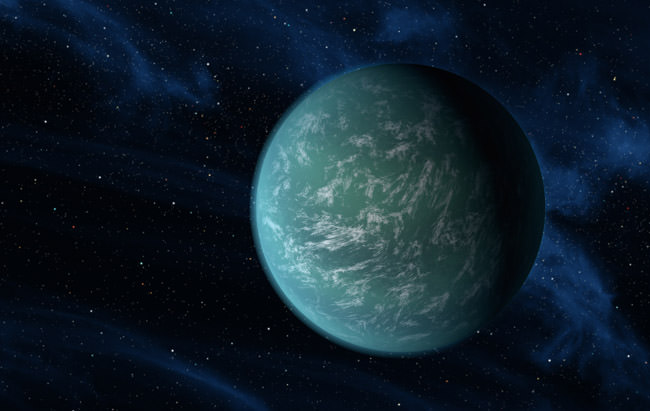[/caption]
As we learned in science class in school, the Earth has a molten interior (the outer core) deep beneath its mantle and crust. The temperatures and pressures are increasingly extreme, the farther down you go. The liquid magmas can “melt” into different types, a process referred to as pressure-induced liquid-liquid phase separation. Graphite can turn into diamond under similar extreme pressures. Now, new research is showing that a similar process could take place inside “Super-Earth” exoplanets, rocky worlds larger than Earth, where a molten magnesium silicate interior would likely be transformed into a denser state as well.
Simply put, the magnesium silicate undergoes what’s called a phase change while in the liquid state. The scientists were able to replicate the extreme temperatures and pressures that would be found inside those exoplanets by using the Janus laser at the Lawrence Livermore National Laboratory and OMEGA at the University of Rochester. A powerful laser pulse generated a shock wave as it passed through the samples. Changes in the velocity of the shock and the temperature of the sample indicated when a phase change was detected.
Interestingly, the different liquid states of the silicate magma in the experiments showed different physical properties under high pressures and temperatures, even though they were still of the same composition. Due to varying densities, the different liquid states tended to want to separate, much like oil and water.
The findings should help to better understand the interiors of terrestrial-type exoplanets, whether they are “Super-Earths” or smaller, like Earth or Mars.
Lead scientist Dylan Spaulding, at the University of California, Berkeley, states: “Phase changes between different types of melts have not been taken into account in planetary evolution models. But they could have played an important role during Earth’s formation and may indicate that extra-solar ‘Super-Earth’ planets are structured differently from Earth.”
The paper was published in the February 10, 2012 edition of the journal Physical Review Letters.


Here’s the relevant (PDF) paper by Dylan K. Spalding: Laser-Driven Shock Compression Studies of Planetary Compositions.
I am not much of a geophysicist, so I might be off base here. However, this would I think imply that the mantle of these planets would consist of two layers in these different phases.
LC
I’m thinking that it would mean that you’d have multiple outer cores, which could be visually represented in a cutaway image similar to that used to show the outer core of a late stage red giant.
So maybe the outer cores of these planets look like onions:).
That might be the case. Structures in planets, such as the Earth, as the mantle, liquid outer core and solid inner core, probably reflect different phases of material under various pressures and temperatures. Some of these super-Earths may have multiple layers with different phases.
LC